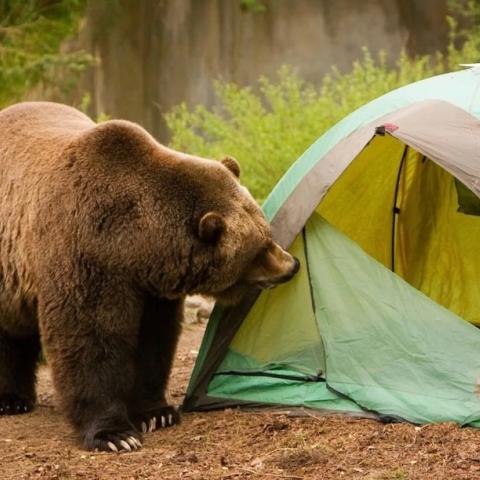
GPS data have revealed seasonal migration routes for mule deer from Grand Teton National Park, across the Teton Range and down into Idaho/NPS
While pronghorn antelope are known to follow the longest migration corridor for large mammals in North America, wildlife biologists recently discovered a mule deer migration route that spans two states and crosses Grand Teton National Park.
According to a park release, the mule deer travel from summering grounds in and near Grand Teton to wintering range along the Teton River in Idaho. A doe captured last fall near Colter Bay was fitted with a GPS radio collar and tracked through the winter months. Beginning in early November, "the deer made her way around the north end of Jackson Lake and then west over the Tetons to winter range along the Teton River in Idaho. Her route crossed the Snake River near Steamboat Mountain, then climbed the east flank of the northern Teton Range. She passed to the north of Mount Berry at an elevation of 8,900 feet and crossed the Teton crest near “Peak 8,456” before descending the west slope of the range," the park release said.
In all, the doe traveled roughly 45 miles and more than 2,000 vertical feet over four days to get to winter range.
Prior to the study, park biologists were aware, thanks to research conducted by the Idaho Fish and Game Department, that deer wintering in at least three different areas in eastern Idaho make long-distance migrations to the Tetons. However, the exact migration routes those deer use were unknown. This study provided detailed information on one of those routes, which crosses multiple jurisdictions, for the first time, the release noted.
The GPS collars used in this study upload data via satellite uplink. The resulting information has pointed to "important wildlife connections between the park and public and private lands outside of park boundaries," the release said.
Earlier work in this study documented mule deer migrations from Grand Teton to three other distant wintering areas. The three migration routes used to access winter ranges on the east side of the Continental Divide include one through southeastern Yellowstone National Park to the North Fork of the Shoshone River, another through high mountain passes in the Teton and Washakie Wilderness areas and across the Absaroka Divide to the South Fork of the Shoshone River, and a third along the Gros Ventre River drainage and across the continental divide to winter ranges near Dubois.
Funding for this project was provided by the Grand Teton National Park Foundation, including a leadership grant from the Knobloch Family Foundation in 2015. This ongoing study is part of a long-term migration initiative started by the park in the 1990s. Other migrations studied include those of bison, elk, pronghorn, red-tailed hawks, osprey, and rough-legged hawks. Collaborators in this work include the Wildlife Conservation Society, Craighead Beringia South, Teton Raptor Center, National Elk Refuge, and Wyoming Game and Fish Department.




 Support Essential Coverage of Essential Places
Support Essential Coverage of Essential Places







Add comment